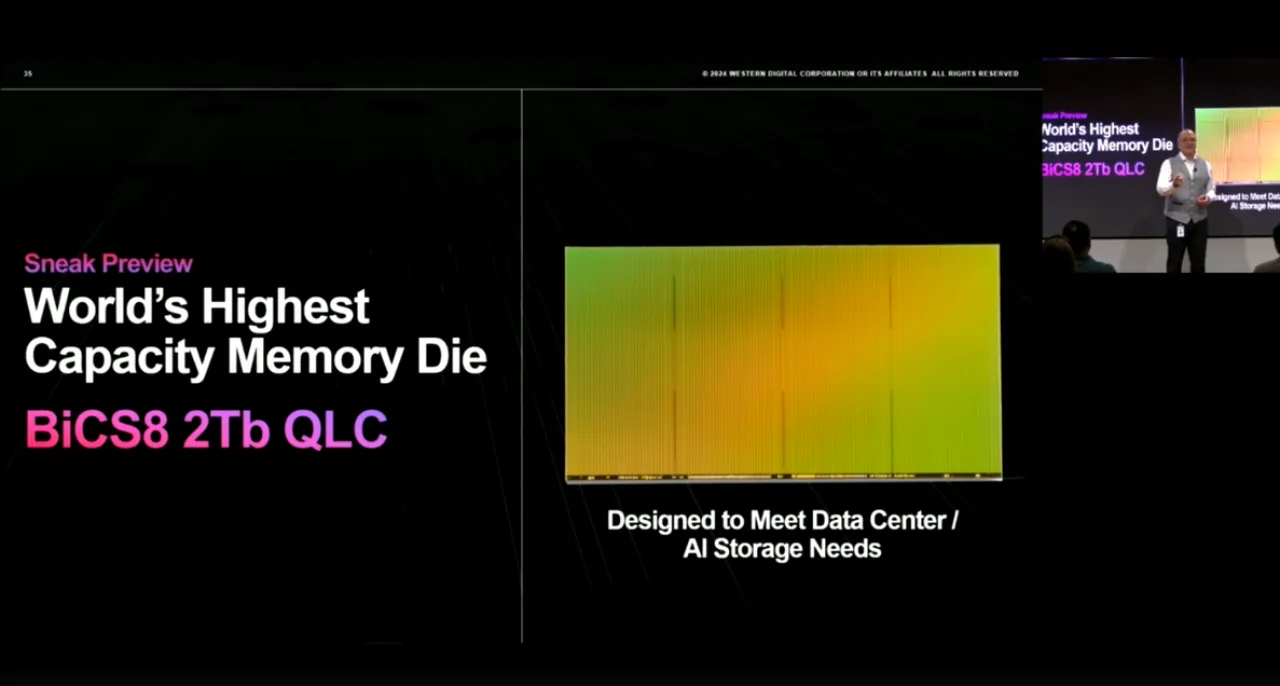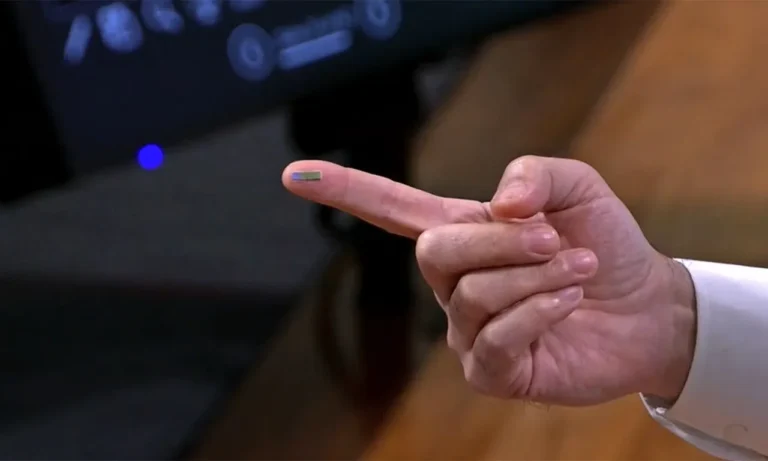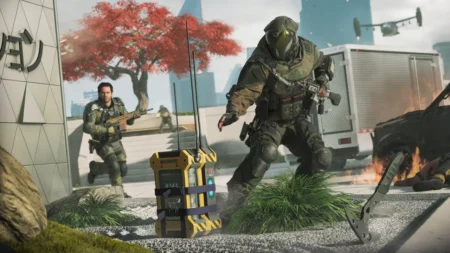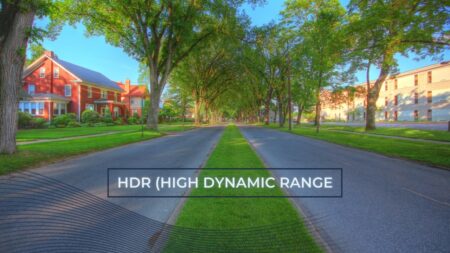SSD capacity is on the brink of a major leap forward, all thanks to a groundbreaking development from Western Digital, or, as we all love to call them, WD. WD has just introduced a game-changing technology at a recent investor’s conference. Imagine a memory die so small you can place it on the tip of your finger, yet so powerful it’s set to revolutionize data storage.
WD currently targets this tech at the heavyweights of data—AI and data center environments. However, fret not: this innovation in massive capacity flash memory chips will gradually work its way down into consumer SSDs soon. Imagine your desktop PC or gaming rig with storage capacities you’ve only dreamt of.
In a jaw-dropping disclosure at the “New Era of NAND” event, Alper Ilkbahar, WD’s senior VP of technology and strategy for memory tech, revealed what he called the “world’s highest-capacity memory die,” a 2Tb 3D QLC (quad-level cell) NAND device. Note that this ‘b’ is small instead of large characters at the end which means terabits, not terabytes. So, this 2Tb die equates to 256GB of storage.

Almost all of the current SSDs share a single chip package containing multiple memory dies. An example is the 2TB WD Blue SN580, which features 16 1Tb (128GB) dies. Now imagine each of those dies holding 2Tb. One chipset with 4TB of capacity! WD isn’t limiting the technology to a single chip package on an M.2 PCB, and this could enable even larger capacities. The Corsair M600 Pro NH is a fine example, cramming 8TB onto a single SSD by using eight chip packages, each with eight 1Tb dies. With WD’s new tech, 16TB SSDs might be a reality in the near future.
The increase in drive space is due to WD and Kioxia’s 8th-generation BiCS 3D NAND technology. This cutting-edge tech stacks 218 layers in a single die—current big players usually top out at 112 layers of NAND flash memory. And that’s not all, this new 2Tb NAND die uses quad-level cell (QLC) flash memory, meaning it can store four bits of data per cell.
One drawback that has been leveled against QLC memory is the comparatively slow read/write speed and lower endurance, which is the number of writes the drive can handle during its lifespan. Yet, WD’s latest tech disrupts these assumptions. It claims the endurance of this kind of memory will be 60% higher than old QLC memory, with lower latency and higher performance. This means the new QLC drives might be a notable improvement not just in terms of storage, but also in reliability and speed.
WD will surely provide time-to-time updates about this game-changing technology and we can’t wait to see more. This advancement is a huge step forward for data centers and AI applications, and one can only imagine a future where SSDs hundreds of terabytes in size are openly available to everyday consumers. So stay tuned for more details—terabytes worth of storage drives are right around the corner.







